Purging My Spare Parts Made Me Love My Garage Again
At 32 by 24 feet, my garage is not huge, but it is certainly big enough to work on fun toys and stash away projects. The line between workshop and storage facility can be a tough one to walk, and lately the hoarding portion of my brain has been winning the battle between making progress on projects and accumulating stuff.
After successfully balancing storage and workspace for three years, I found myself at a breaking point. I went out to the garage on a Saturday morning, hot coffee in hand, ready to work on something. I was greeted by the reality that, no matter what project I wanted to work on, I needed to rearrange some pile of stuff in order to get started on it. All three work surfaces—48 square feet of space—were covered.
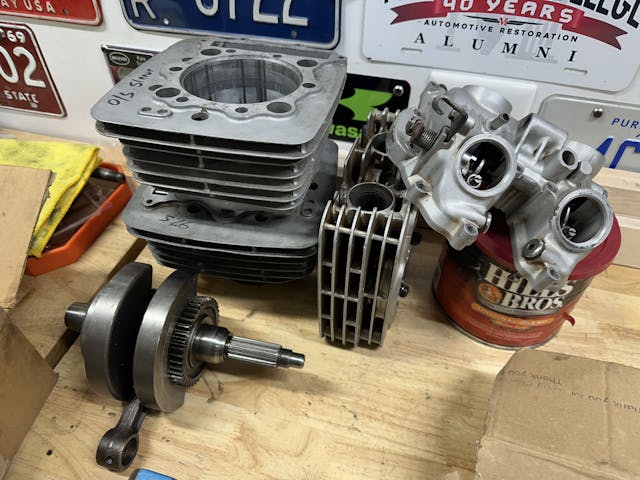
Having to shuffle junk to get work done was such a buzzkill that I did little more than pick up something, fiddle with it for a minute, and go back inside the house. The proverbial parking lot was full, the fire lane was occupied, and somehow there was even stuff parked on top. There was no more space to store things, which meant there was no more space to work on things.
This situation demanded that I purge all of my spare motorcycle parts. The stacks of metal and plastic had no real organization. Each bin was labeled “parts.” Just about every Honda XR that has crossed the threshold into this space has been partially, if not fully, disassembled. Some got put back together. For a long time any XR bit that I deemed “usable” I put on a shelf. After three years in this shop, it was time to re-evaluate my definition of what should be saved.
Everything that I had so carefully stacked on a shelf I pulled out and laid on the floor, where each part was inspected, wiped down, and finally sorted before going back onto the shelf—or into the discard pile. The sad reality of the task was learning just how much straight-up junk I was keeping. Why did I need three sets of bent-up foot pegs? Or two frayed clutch cables? Multiple sets of bent handlebars?
My system of storing parts was all wrong. A parts stash should not be a repository of anything that can be useful; it needs to be full of things that are worth storing. With great care I had assembled the perfect place to work on projects and then used it to store scrap metal.
It was a game of keeping the best and culling the rest. I have a few rare pieces and a few valuable ones, and even a couple that are both. I am oddly chuffed about my collection of cylinder heads, so I stored those carefully under the workbench. While most of the bent-up footpeg pile went into the scrap bin for recycling, I kept the best pair because I expect to do a restoration one day and I’m gambling that OEM pegs might be hard to find by then. (Only need one pair, though.) Anything I knew to be OEM-correct and of restoration quality I retained. Dozens of cables became a few good spares that could be used for test fitment or to allow a project to limp along until a new cable arrived in the mail—they are only $8 and still in mass production. The used countershaft sprockets felt so good to expunge that I can’t believe I ever held onto them at all.
Now that I’ve confronted my excess junk, all my projects will progress. The feeling is sublime: A clean workspace primed and ready to take advantage of any spare time I can find. Without the need to clean a spot before being productive, 30 minutes of work is actually 30 minutes of work, not 15 minutes of shuffling and 15 minutes of work. All that time adds up, but if you had told me I could find more time to work on projects by taking out the trash, I’d have called you crazy. Now I know it was me that was crazy. What was my plan for those worn-out rear sprockets, anyway?
***
Check out the Hagerty Media homepage so you don’t miss a single story, or better yet, bookmark it. To get our best stories delivered right to your inbox, subscribe to our newsletters.
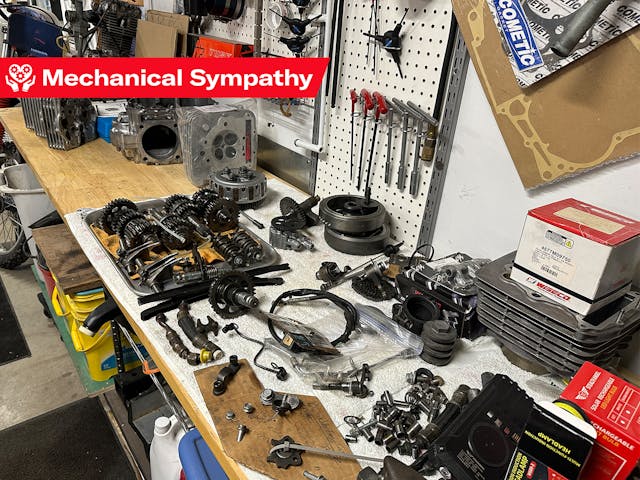
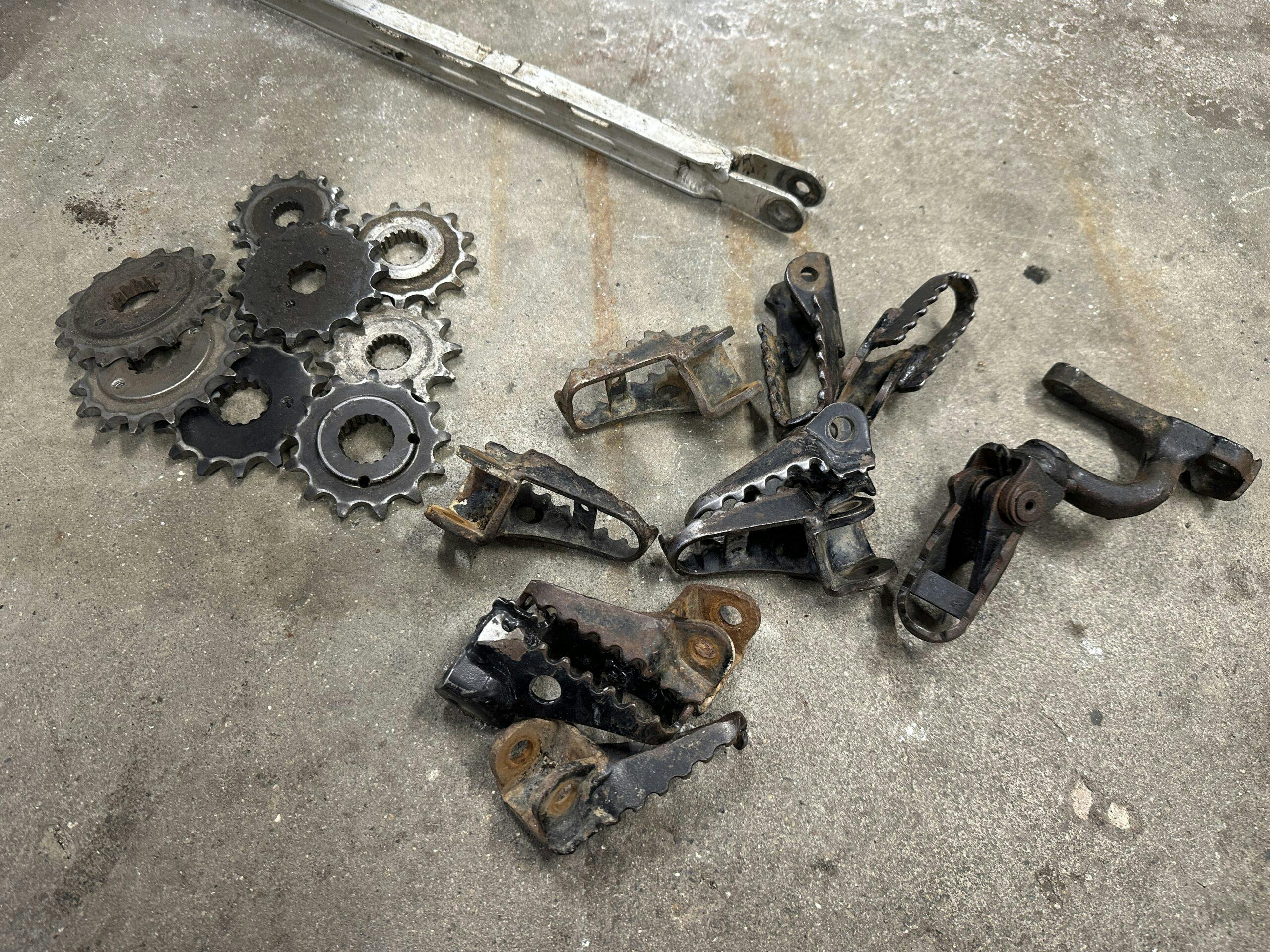
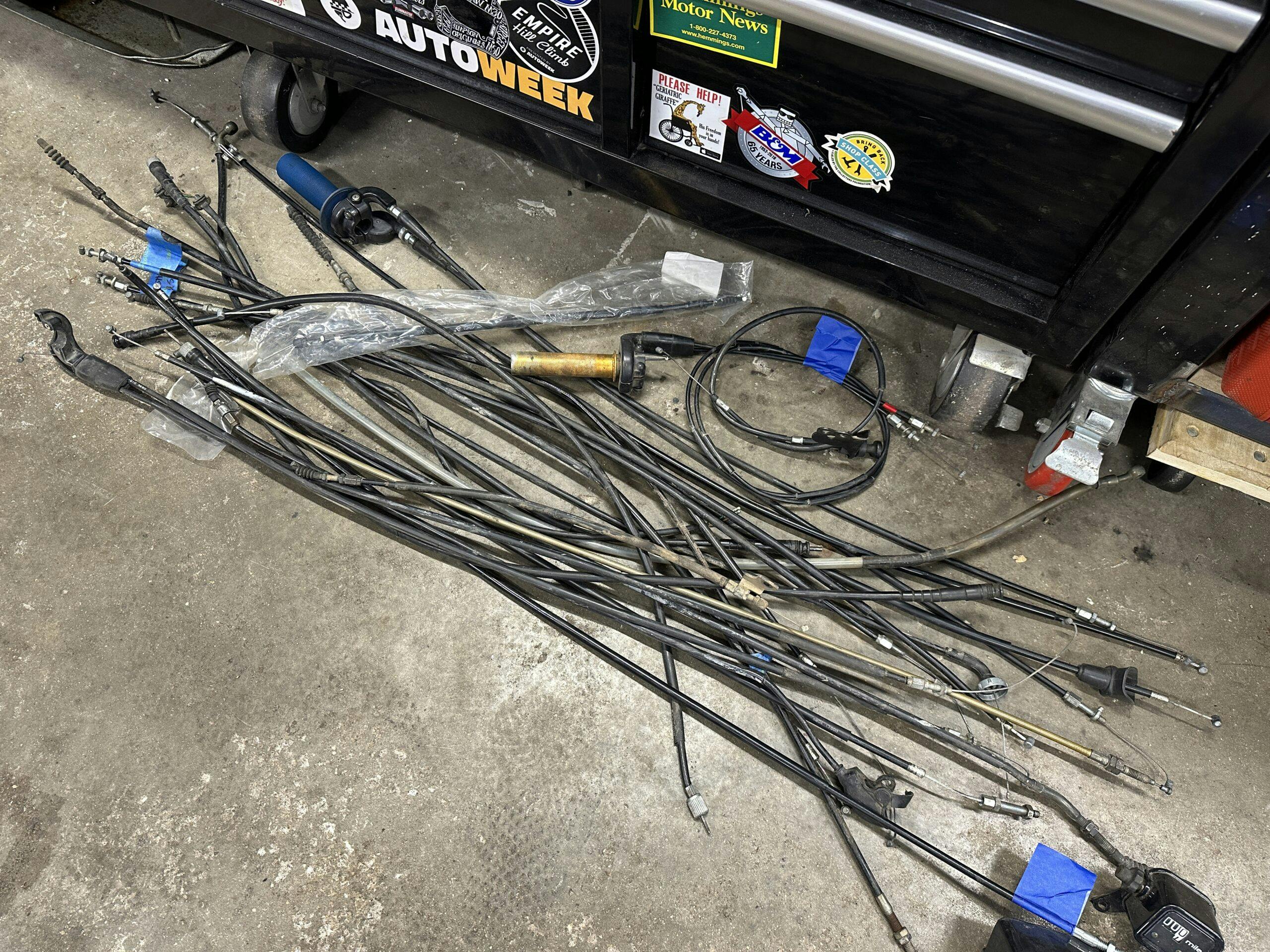

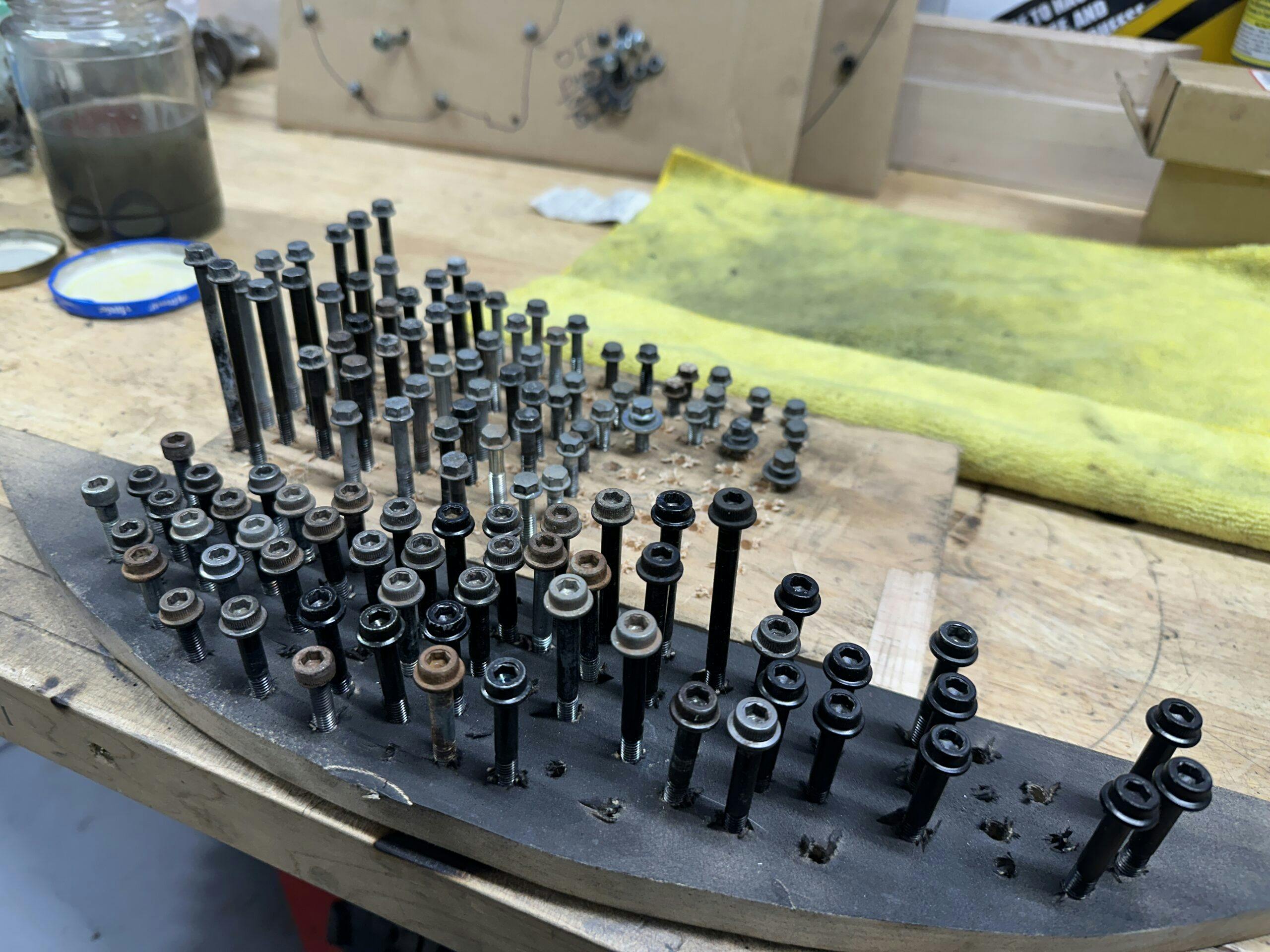


I completely understand the covered work benches…
That said, I’m trying to teach my kids to do as I say instead of as I do. My 14 year old and his friends stripped down an old K20 that he picked up for the drivetrain. In 5 hours they completely stripped that truck of usable parts down to the rolling chassis (that’s getting swapped into the boy’s K10). The next day I had him do almost exactly what you did- lay it all on the floor and make three piles- keep, sell, and scrap. What is being kept is neatly stored in totes out in the shed and off my workbenches 🙂
It’s pretty much guaranteed now that the first project you work on will require something you just threw out or can’t find because you moved it.
A buddy of mine bought a Ford truck with a 302 with some cylinder head damage. In a previous adventure, he had made several attempts to replace a bad 302 in a boat with $200 craigslist engines. When one of these finally worked, the growing pile of 302 parts was discarded. I reminded him of this when he was telling me about his current engine problems.
Did the same but with a much heavier hand. Purged my 50+ year garage of all things car, dirt bike and historic home owner derived accouterment. Skinned, rewired/replumbed, and refinished each wall and the ceiling. Disappeared the pocked and stained floor with coin patterned vinyl matt. Transitioned every floor edge and corner with wood molding and AL extrusion. Finished with floor to ceiling cabinets, Rockler WB, 42 drawer parts bin and 4X 12 x 12 steel peg board panels. Creme de la creme is the new U-shaped window AC keeping everything dry and cool (FL summer) providing a workspace that is comfortable year round. Now on to the NA mods to bring it a little closer to the Elan benchmark. Always something.
Maybe, but I’ve also been telling myself that for three years and…. haven’t needed this stuff. Looking forward at the projects and direction of work I have planned for the near and further off future, it was unlikely that was going to change.
Well the key is to finish a project before you toss everything. You never know when finding that old part may not be easy or you may need the old part to fab a new one to replace it. Once done clean out.
Never toss fasteners of in good condition. Things like old intakes etc hang em up. You can trade or use later on other projects. For not use them as decoration.
Fill in over head space and put in a drop ladder and store larger items out of site.
You do know if you keep a part for a spare it is great insurance you will never need it. If you toss it you will wish you had kept it. Smokeys Law.
I have issues with purchasing a vehicle and then immediately searching for OEM parts whether I needed them or not. After doing this for years the parts bins/shelves are full of some pretty rare items… which I have yet to use. Turning 70 this year and beginning to realize it’s time to start thinning out the projects and parts . Especially since I’m the only one who knows what they are for. No sons to carry on my passion. But two lovely daughters and wife…..
Brett, I’m in the same boat, just turned 69. Last year the local drag strip had a big race with swap meet. I went on line, reserved 2 spaces, and enlisted my retired buddies help. We loaded and hauled 2 pickup trucks of blocks, heads, cranks, and other parts to the meet. We came back nearly empty handed. I gave some younger people fantastic deals and got those parts back into circulation. And my wife won’t have to deal with it when I go to the big hobby shop in the sky.
Welcome to the club! I turned 78 last month, and decided to face the reality that if and when I croak, my wife and kids are going to call 1-800-GOT-JUNK and toss everything. And they might feel guilty about it. Just a bad end to a fun hobby. So I decided that there weren’t any more Honda Elite scooters in my future and put an ad on Craigslist saying i had this collection of parts, some good, some crap, that I would give to anyone who had a use for them. No replies for about a month and then someone got in touch, we talked some and today he came and took 7 or 8 boxes of stuff. It feels like my garage just got past a prolonged spell of constipation.
Hopefully nothing tossed comes back as a need shortly.
My garage is an absolute disaster that would (and will) be solved by having one area to store parts. My garage is smaller at 26×24, but I plan to make a tote rack on one of the walls to store bits. I try only to keep what can’t be replaced. Most running gear is still available so I focus on bits that are NLA. Typically body and interior parts, along with switches and trim.
I’m also losing a LOT of space to an overdue scrap run. Who knew that ditching my truck for an SUV with no hitch would hobble me so much? (I did. It was a bad move, in hindsight.)
I kept adding on to my shop to create more storage space for projects and parts. I am now 70 years old with 5 project cars that I will never live to see completed (and probably not even the 2 that I think I will..) and more Crap (capital “C”) that if I were to clean up would take the rest of my useful life. I am glad to see some folks with the same problem- there is always a little comfort when you are not the only one. I should have never built that first “add-on” storage.
If you kick the bucket, how with the stockpile of part be disposed of? I wonder if there’s an automotive-focused estate sale program out there?
Honestly that’s not a bad business Idea
About 35 years ago, my sister gave me two used outdoor lights to use on my garage. I only needed one, so I kept the other as a spare. About two years ago, that light I used died. So, I replaced it with the spare. I was so proud of myself until I realized that I kept that light for 33 years so I could save $30.
A good lesson in setting storage priorities. Thanks for the reminder, Kyle!
The turning point seems to be for us senior people to realise that after we go, that all the so called, useful stuff, will only be a burden to our loved ones. I for one, have a collection of BSA bits, that “one day” I will get build a complete bike using these bits, not likely!
I am going on to 72-73? (dang memory:-) ), Parts are one thing, tools are another.
I have tools, and supplies, (a lot of em) for regular, special and or different engines to maintain and rebuild them.
And a lot of fabrication equipment to make what you can’t find or buy or need to build whatever with.
A whole lot of them only get used just once in a blue moon, but am really glad I had them.
My son is not interested and one of those if you don’t use it in a year, get rid of it.
A lot of all that stuff, no one, or very few, know what they are, or are for, much less how to use them,
Or how to use them correctly.
I would like to even give them to someone who would really appreciate them and keep them..
But…
How do you go about finding that person???
As an alternative, how would you store all that stuff, and keep it together, for at least several generations until the right descendant comes along?
Especially when you don’t have a lot of money to store it in a good environment……..
Any automotive schools or high school vocational-technical schools with automotive training programs in the area? They may be able to make use of your unwanted spare parts or tools. Maybe you could write them off as donations as well.
I’m going to do that, too. First thing next week. Honest.
I really mean it.
I probably have the most Chrysler H body parts ( 85-89 Dodge Lancer & Chrysler Lebaron ). But I have them in my shed. If I need anything else my Shelby Dodge friends rent a barn up in northern Illinois full of parts. Recently I needed a crankshaft sprocket for my ’89 and he had it for my engine. I’ll have to better organize this summer.
i think a lot of us are guilty of this. After having several roadmasters i have collected quite a lot of parts that fill one of my storage units and then some. I still have a wagon so some parts i will hold on to as long as i have the wagon- like a spare rear hatch glass. After having one get destroyed by an errant golf ball and learning how hard one was to come by 12 years ago, i learned my lesson.
other parts that aren’t for this model or that i have multiples have eventually found their way to other owners in need. But still have too much at this point but tossing them in the trash would be so wrong.
I bought my house specifically because it came with a 25 X 25 detached garage thinking “I’m set for LIFE!” and was dismayed that after two years there wasn’t a safe pathway through it. The only thing I’ve done right is refusing to add on to it when all my “friends” said to.